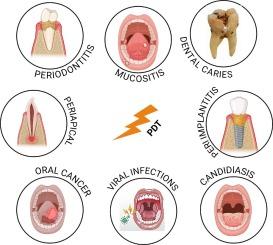Photodynamic therapy: An emerging therapeutic modality in dentistry
IF 3.3
3区 医学
Q2 BIOCHEMISTRY & MOLECULAR BIOLOGY
引用次数: 0
Abstract
Photodynamic Therapy (PDT) is a rapidly evolving, non-invasive treatment modality with considerable promise in dental pharmacotherapeutics. This review article comprehensively examines PDT, beginning with its principles and then delving into its diverse applications in dentistry, including periodontal disease, endodontics, oral cancer, dental implants, and dental caries. Each area presents the latest research and discusses the potential benefits and challenges. The unique advantages of PDT are highlighted, such as selective targeting, broad-spectrum antimicrobial effect, lack of resistance development, and its synergistic effect with other treatments. However, challenges such as photosensitizer delivery, light penetration, oxygen availability, and the need to standardize protocols are also acknowledged. The review further explores future perspectives of PDT in dentistry, including advancements in photosensitizer design, overcoming hypoxic limitations, personalized protocols, integration with other therapies, and standardization and regulation. The potential of advanced technologies, such as nanotechnology and synthetic biology, to improve PDT outcomes is also discussed. The review concludes that while PDT has shown immense potential to revolutionize dental pharmacotherapeutics, further high-quality research is needed to translate this potential into everyday dental practice. The promising future of PDT in dentistry suggests a more effective and less invasive treatment option for a range of dental conditions.

光动力疗法:一种新兴的牙科治疗模式。
光动力疗法(PDT)是一种发展迅速的非侵入性治疗方式,在牙科药物治疗中大有可为。这篇综述文章全面探讨了光动力疗法,首先介绍了其原理,然后深入探讨了它在牙科中的各种应用,包括牙周病、牙髓病、口腔癌、牙种植体和龋齿。每个领域都介绍了最新的研究成果,并讨论了潜在的益处和挑战。其中强调了光敏剂的独特优势,如选择性靶向、广谱抗菌作用、不产生抗药性以及与其他治疗方法的协同作用。然而,光敏剂输送、光穿透、氧气供应以及标准化方案的必要性等挑战也得到了认可。综述进一步探讨了光动力疗法在牙科中的未来前景,包括光敏剂设计的进步、克服缺氧限制、个性化方案、与其他疗法的整合以及标准化和监管。此外,还讨论了先进技术(如纳米技术和合成生物学)在改善 PDT 治疗效果方面的潜力。综述的结论是,虽然光动力疗法在牙科药物治疗方面显示出巨大的变革潜力,但要将这种潜力转化为日常的牙科实践,还需要进一步的高质量研究。PDT在牙科领域的发展前景广阔,为一系列牙科疾病提供了更有效、创伤更小的治疗方案。
本文章由计算机程序翻译,如有差异,请以英文原文为准。
求助全文
约1分钟内获得全文
求助全文
来源期刊

Bioorganic & Medicinal Chemistry
医学-生化与分子生物学
CiteScore
6.80
自引率
2.90%
发文量
413
审稿时长
17 days
期刊介绍:
Bioorganic & Medicinal Chemistry provides an international forum for the publication of full original research papers and critical reviews on molecular interactions in key biological targets such as receptors, channels, enzymes, nucleotides, lipids and saccharides.
The aim of the journal is to promote a better understanding at the molecular level of life processes, and living organisms, as well as the interaction of these with chemical agents. A special feature will be that colour illustrations will be reproduced at no charge to the author, provided that the Editor agrees that colour is essential to the information content of the illustration in question.
 求助内容:
求助内容: 应助结果提醒方式:
应助结果提醒方式:


